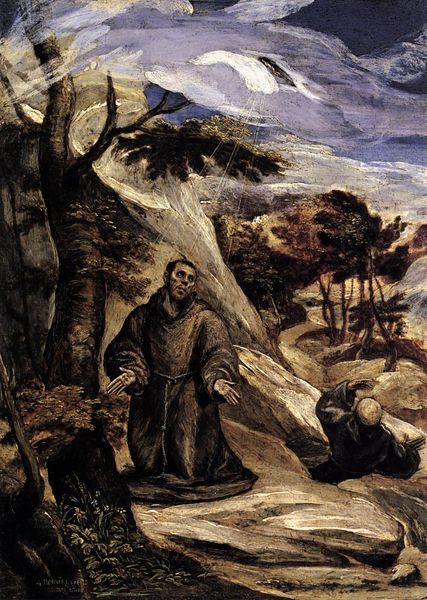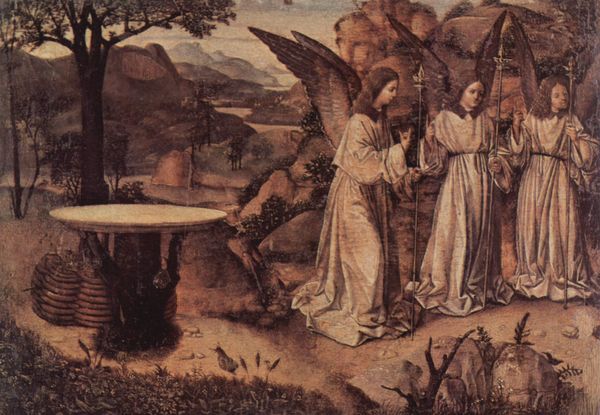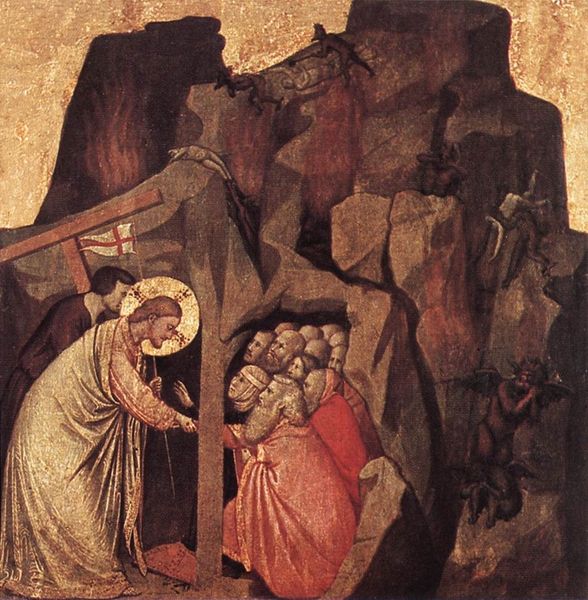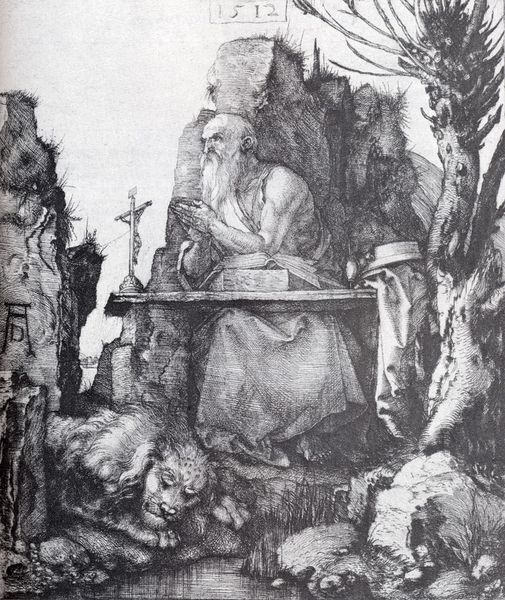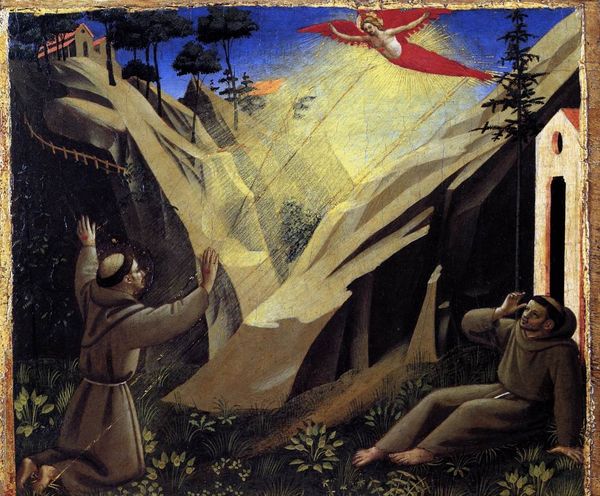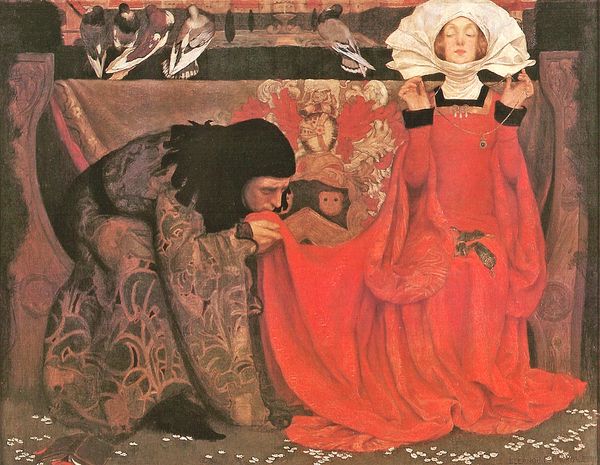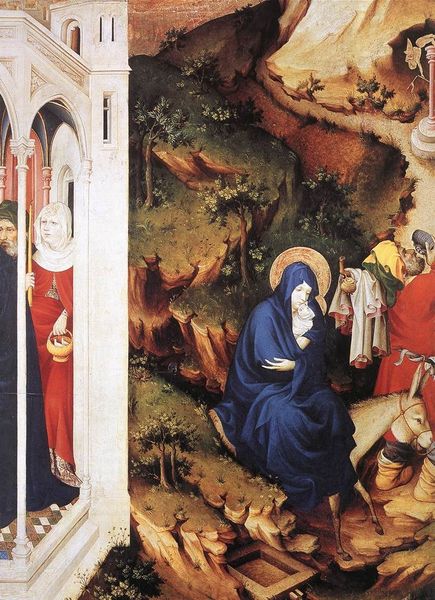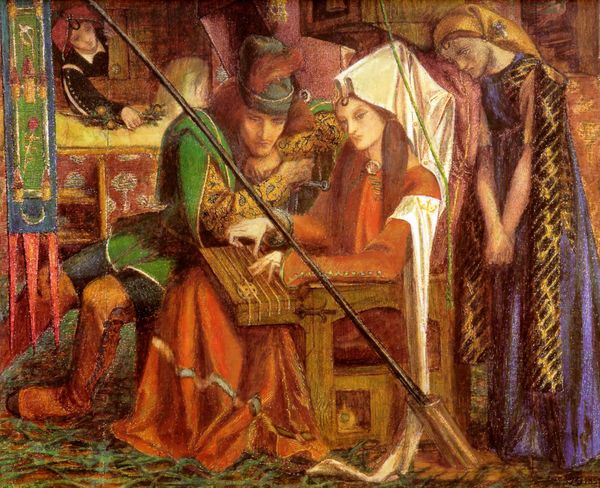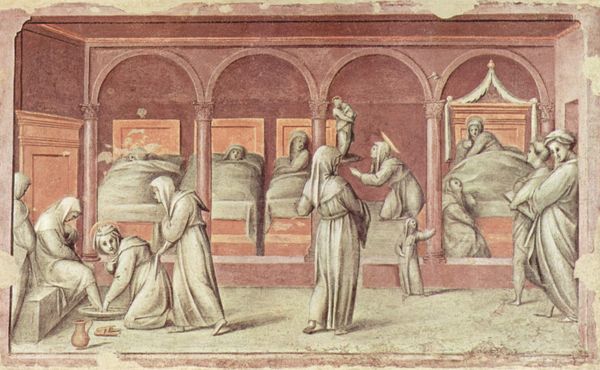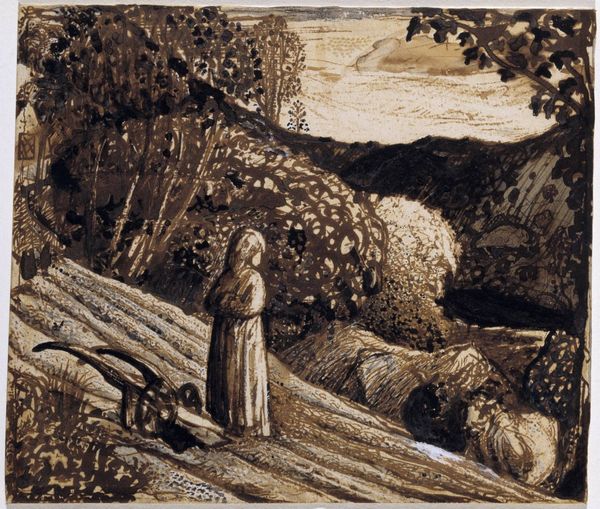
The Stigmatisation of St. Francis 1460
0:00
0:00
pierodellafrancesca
National Gallery of Umbria (Palazzo dei Priori), Perugia, Italy
#
water colours
#
painted
#
possibly oil pastel
#
underpainting
#
pastel chalk drawing
#
christianity
#
painting painterly
#
watercolour bleed
#
watercolour illustration
#
mixed media
#
watercolor
#
christ
Copyright: Public domain
Editor: Piero della Francesca’s "The Stigmatisation of St. Francis," painted around 1460. It's currently hanging at the National Gallery of Umbria in Perugia. I’m immediately struck by the stillness of the scene. The two figures are so contained within this expansive landscape. How do you interpret this work, considering its historical context? Curator: It’s fascinating to consider the patronage of this work, and where it might have originally been displayed. This would influence not only its interpretation but its very creation. The setting—a seemingly desolate landscape—itself becomes a stage for religious experience. Where might this painting have hung, and how might that impact public access to it and understandings of Francis’s role as an advocate for the poor? Editor: That's a great question. I hadn't considered the placement impacting accessibility, it’s easy to think that artworks always were placed on museum walls for anyone to see. But thinking about the specific patronage... do you mean, the kind of political implications are coded in it too? Curator: Exactly! The Franciscan order was itself deeply embroiled in social and political issues. Consider the ways poverty was understood at the time, both idealized and feared. How does the stark, almost barren setting play into those tensions? Was this artwork accessible by the poor or only those in positions of power? These are crucial aspects of the visual power of such paintings. What message does it convey to different segments of society? Editor: So it's not just about the religious symbolism, but about who the symbolism is for, and who controls access to those images. That frames it in such a different way! Curator: Precisely. Thinking about it as not only religious art, but also propaganda... how then does it shift how you might respond to it aesthetically? Editor: It makes me see how actively this painting engages with its world, and how my own perspective is shaped by when and where I'm viewing it now. I didn't realize it was so charged! Thanks, Curator, I have something new to look for next time I'm viewing a piece. Curator: Indeed. Remember, art doesn't exist in a vacuum. It is a product of and an influence upon its society.
Comments
No comments
Be the first to comment and join the conversation on the ultimate creative platform.


